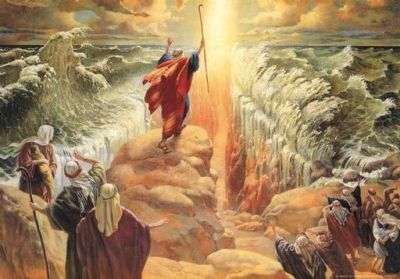Readers lost in Sea of Reeds?
 While I was covering the religion beat for The Charlotte Observer long ago, one of my editors stressed that I should not write in a story that a man said that a key moment in his life was when he "walked the aisle" and "accepted Jesus as his personal savior." It did not matter that these terms were used in an evangelical context and were explained. It also didn't matter to the editor -- a Unitarian, by the way -- that the newspaper was in a city in which one of the major roads is named after that famous local guy named Billy Graham.
While I was covering the religion beat for The Charlotte Observer long ago, one of my editors stressed that I should not write in a story that a man said that a key moment in his life was when he "walked the aisle" and "accepted Jesus as his personal savior." It did not matter that these terms were used in an evangelical context and were explained. It also didn't matter to the editor -- a Unitarian, by the way -- that the newspaper was in a city in which one of the major roads is named after that famous local guy named Billy Graham.
This is, however, an example of a crucial issue for professionals on the Godbeat.
How do we know what our readers understand and what they do not understand? Does it matter if a reporter uses religious language accurately if a large percentage of readers do not know what the words mean? Where do we cross the line between writing with authority and simply sliding -- "inside baseball style" -- into niche language?
Please consider this example on the left side of the sanctuary aisle.
GetReligion reader John L. Hoh Jr. recently sent us an interesting Milwaukee Journal Sentinel story about rites held for five women who never been able to celebrate bat mitzvah ceremonies. Here is a crucial passage in the story:
(At) one point, Rabbi David Brusin surprised the people at Congregation Shir Hadash by having the five women take tambourines and move through the parting, swaying crowd in a symbolic re-enactment of Miriam crossing the parted Sea of Reeds with Moses.
The idea for Saturday's event originated with the congregation's Rosh Hodesh women's group, named after the monthly appearance of the new moon in the Jewish calendar. It is celebrating its 13th anniversary this year, the age at which girls in this Reconstructionist congregation normally have a bat mitzvah ceremony.
Having these adult women become b'not mitzvah (the plural of bat mitzvah) was a meaningful way to mark the anniversary, said Sara Shutkin of Whitefish Bay, who is a founder of the group. Most grew up when such public ceremonies were not commonly offered for girls in Reconstructionist, Reform and Conservative congregations in their areas.
I have some questions. It helps that the story makes an attempt to define, in some way, the small Reconstructionist movement (the modernist, progressive wing of Judaism). Still, readers are given little to work with in terms of where this movement fits in with Reform or Conservative Judaism, let alone the various forms of Orthodox Judaism. Do readers know things like that?
And what about the Sea of Reeds? I assume that people who have taken a biblical-studies class or two in college or graduate school would understand that reference. But many, many more people are likely to be confused. They are familiar with the parting of the Red Sea, as described in thousands of churches and synagogues (not to mention a certain Hollywood movie and plenty of other forms of populist art).
Should the reporter pause and explain the background of that "Sea of Reeds" reference? Should it be placed in the context of debates between premodern and modern forms of the Jewish faith? In other words, for whom is this story written? How much do these readers need to know in order to read their daily newspaper?